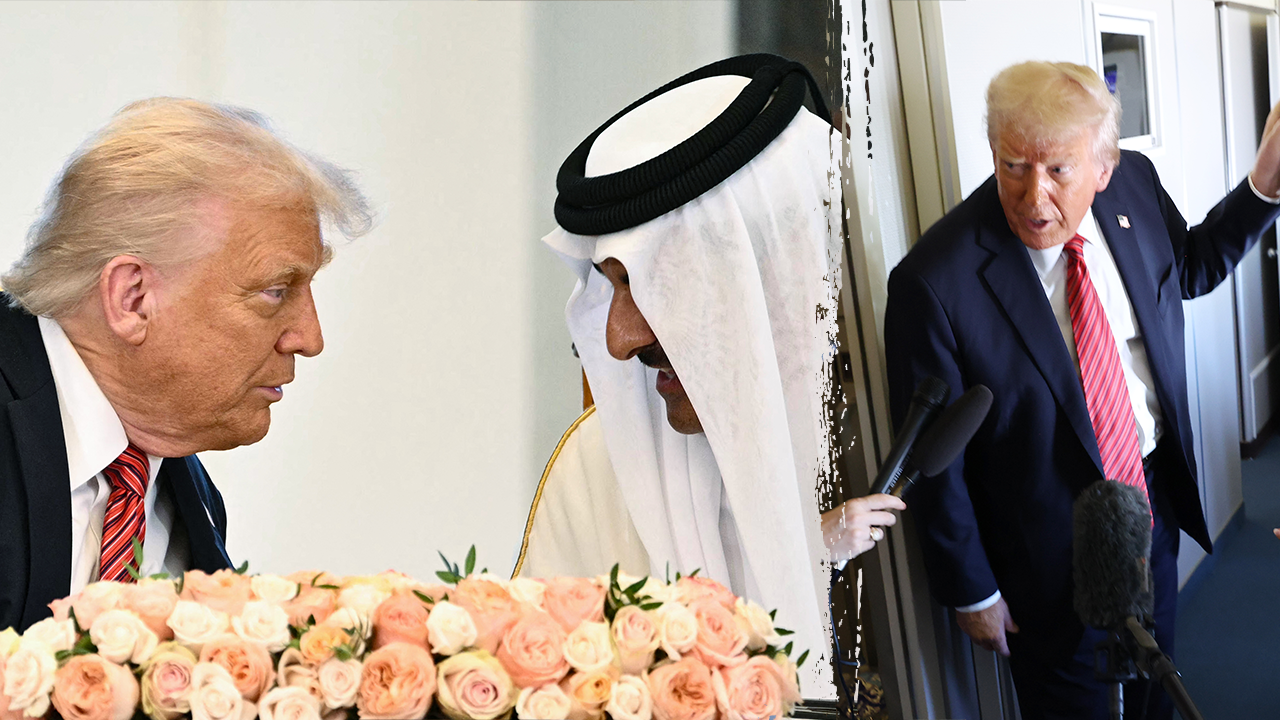Connecticut
Opinion: CT’s unspoken crisis: Elevating the voices of young people

Public systems that are supposed to help young people often end up perpetuating disconnection. That’s what we learn when we listen to young people who are disconnected from school and employment in Connecticut.
Through its Connecticut Opportunity Project initiative, Dalio Education recently released the final report in its research series on Connecticut’s Unspoken Crisis: “Elevating the Voices of Young People,” prepared by Community Science. The power of this study to inform our understanding of how to successfully re-engage the 63,000 young people in Connecticut who are disconnected lies in its design: the data source for the report’s findings and recommendations are the voices and experiences of the young people directly impacted by this crisis.
When we listen, we hear how one young man ended up in juvenile probation because of his school’s response to his absenteeism. In his words, he was in juvenile detention for “truancy, not going to school, not showing up, not being where I was supposed to be at.”
We also hear how young people in need of housing hesitate to seek supports for fear of triggering child welfare system involvement, with one young woman revealing: “When people do the 211 call and say certain things, next thing you know DCF’s involved. When it’s really not even their fault or anything, but they’re not doing anything bad.”
A total of 74 young people between the ages of 14 to 26 were interviewed by Community Science from across seven cities, with an overrepresentation of Black and Hispanic/Latino(a) young people, and more men relative to women, mirroring the demographic trends we see in the population of young people in Connecticut who are experiencing disconnection. Community Science explored young people’s experience in their community, interactions with different public systems (education, criminal justice, child welfare, healthcare, and housing), and hopes and aspirations for the future.
Young people further shaped the study through the creation of a Community Advisory Group (CAG) that was convened regularly to inform the collection and interpretation of data. Nine of the 13 CAG members were young people who had experienced disconnection. They were joined by four professionals who work with or in support of this youth population and served as validators for their perspectives while providing additional context, in terms of the challenges and assets of communities as well as the racial, ethnic, and cultural dynamics that exist in Connecticut. We created a space where people could show up authentically to share their experiences and feedback, to help test the analysis and ensure the key themes emerging from the study resonate with their experiences in their communities. All of the major decisions made by the research team were shaped by input from the CAG, including pivots made based on insights they shared.
From this report, we see that disconnection from education is often a precursor to interaction with other systems, and that once young people are engaged in multiple systems, it can produce an almost self-perpetuating cycle that leads to long-term disconnection, from school and work as well as from other resources, which reinforces the challenges young people are facing.
We also learn about the important role of social capital and how lack of access to it impacts young people, with the limited nature of resources and supports available to young people making it that much more difficult for them to weather the complex challenges they face.
Through improved system coordination coupled with culturally-responsive, trauma-informed practices that prioritize rehabilitation over punitive measures, we can do better by our young people, and help them achieve goals and aspirations they hold that are so much bigger than just themselves, including their children, families, and communities. As one young woman reflected: “Construction would really help me because I really want to build something for the children. I want to build something for the homeless where you don’t have to be on the streets no more. I want to do that in every community that I go to. I want to help every community that I can.”
The goals and aspirations of the young people interviewed for this report are not unlike those that many young people would share – financial security, educational attainment, gainful employment. Their definitions of success also reflect the profound challenges they have had to navigate with determination and hope for a better future. According to one young person: “…success means to me when I’m wealthy enough, my kids or my future generation wouldn’t have to worry about anything. I feel like that’s real success.”
Through these reflections, one key theme that shines through is our young people’s incredible “resilience, resourcefulness, and determination to transcend the limitations imposed upon them by societal norms and structural inequalities,” in the words of the report’s authors.
This report also demonstrates how we can position the young people impacted as the ones not only conveying their needs but also as part of developing the solutions. This approach enables the creation of solutions that are practical, responsive, and fully actualized because they are designed in partnership with those whose needs they are designed to meet. That’s how we address root causes and generate real change.
Samantha Miller is a Portfolio Director for the Connecticut Opportunity Project at Dalio Education

Connecticut
This is how much untreated wastewater went into the Connecticut River last year

There was a drastic decline in the amount of untreated wastewater that overflowed in the Connecticut River last year compared to 2023, according to a new report from the Massachusetts Department of Environmental Protection.
The report, which came out last week, showed that 543 million gallons overflowed into the the Connecticut River last year across 12 days with weather events, compared to close to 1 billion gallons in 2023.
Some communities in the Pioneer Valley constructed their sewer systems to also accept stormwater. During heavy rains, the stormwater and sewage overwhelm some wastewater treatment plants and flow — untreated — into nearby bodies of water. The event is called a combined sewer overflow (CSO), and officials issues warnings afterwards to avoid affected water bodies for 48 hours because of pollutants and bacteria.
“In 2023, we had extremely heavy rainfall over the summer and into the winter which resulted in several catastrophic floods throughout the Connecticut River watershed. In contrast, 2024 was a drought year and there was significantly less rainfall,” Ryan O’Donnell, water quality program manager at the Connecticut River Conservancy, wrote in an email.
The amount of overflow depends on the amount of rainfall and snowmelt that occurs, the MassDEP report says.
“Wetter weather conditions, particularly those with significant precipitation, increase the likelihood of CSO discharges,” the report says.
The reduction of untreated wastewater entering in the Connecticut River in 2024 because of combined sewer overflows can also be attributed to the opening of Springfield’s York Street Pump Station in 2023.
The project has “doubled the capacity of our old wastewater pump station and can pump more combined flow to the wastewater treatment plant during storm events,” said Jaimye Bartak, communications manager for the Springfield Water and Sewer Commission.
The commission spent $137 million on the pump station project.
The commission, she said, has spent more than $300 million over the last three decades to reduce and mitigate combined sewer overflow discharges into the Chicopee and Mill rivers and their parent, the Connecticut River.
The commission also has collaborated with other communities to reduce the discharges in the Connecticut River by approximately half, she said in an emailed statement.
“Much CSO investment remains to be done in the region, but we are proud of that progress and it is evident in the increased recreation on and enhanced development along the Connecticut River,” she said.
Wastewater systems across the state are required to notify the public anytime sewage discharges and overflows into Massachusetts water bodies.
Communities, like Holyoke and Chicopee, are also in consent agreements with the federal Environmental Protection Agency to completely eliminate their combined sewer overflows — a multimillion dollar undertaking.
Holyoke, which entered into a consent agreement with the U.S. Environmental Protection Agency in 2023, is working on sewer separation projects to reduce its overflows into the Connecticut River.
Joshua A. Garcia, Holyoke’s mayor, said at a groundbreaking for the River Terrace sewer separation project on Monday, that local governments have to address these issues incrementally.
Garcia said the project is very expensive, but the city can’t keep ignoring the issues. “We have to start moving toward the end goal,” he said.
Chicopee has been in a similar agreement with the EPA for over two decades.
By 2022, Chicopee had spent $225 million on its effort to separate storm drains from sewer pipes, which was a part of its EPA order that requires the city to stop dumping raw sewage into the rivers every time it rains. At the time, the project still needed $300 million to complete.
In addition to fewer discharges of untreated wastewater in the Connecticut River in 2024, there were also fewer discharges in the Mill and Chicopee rivers, the report says. The Mill River went from having 37 million gallons in discharge in 2023 to 18 million the year following. The Chicopee River went down from 23 million gallons to 11 million gallons.
Despite the local decreases, the overall volume untreated wastewater discharge increased in Massachusetts, jumping up from 7.2 billion gallons to 7.6 billion gallons of sewage that entered water bodies across the state.
Particularly, the Massachusetts Bay — on the eastern part of the state — saw an increase in combined sewer overflow discharge from 1.3 billion gallons in 2023 to 1.8 billion gallons in 2024.
Connecticut
Opinion: Energy legislation needs work, but solutions are in sight

When SB 1560, An Act Concerning Connecticut’s Economy, Electricity Affordability and Business Competitiveness and Establishing the Connecticut Energy Procurement Authority and the Green Bond was posted, it raised eyebrows.
It’s not often a comprehensive 80-page energy bill is introduced in a committee other than Energy & Technology.
The bill creates the Connecticut Energy Procurement Authority (CEPA), charged with taking over the buying of electricity, a function performed by our utilities. Also created is a Green Bond fund to pay for parts of electricity bills currently funded by ratepayers.
The complexity of energy markets is daunting, but it’s important to note that there are processes, called dockets, in which all the players get a chance to participate equally. That due process is vital. It minimizes favoring one interest group over another.
SB 1560 needs work in that area. From testimony posted on the CGA’s website, it clear that many of the bill’s proposals caught energy stakeholders off guard.
For example, if you put solar on your house or business, you are compensated for that, just like a power plant. And on really sunny days, unlike a fossil fuel plant, you’re putting 100% clean electricity into the grid. SB 1560 would drastically reduce that compensation for solar, just when grid-helpful solar with battery backup installations are increasing.
Solar vendors testified the change would wipe out the solar industry in Connecticut. The exodus of those businesses, jobs, and tax revenue from the state is in no way a positive. There’s a docket currently underway examining solar compensation. Let’s allow that to play out.
Another change proposes redefining nuclear power as renewable energy. To be clear, this won’t suddenly make spent uranium fuel rods unspent. But it will take funding away from true renewables that are cheaper in the long term.
Ironically, for legislation promoting cost reductions, the solar and nuclear sections will save little, if anything, in the short term, and likely increase costs long term. Similarly, a section to reduce high demand charges to businesses would simply spread that among other ratepayers.
Tasked with electricity procurement, CEPA, according to the Connecticut Office of Consumer Counsel, is not obligated to follow the Uniform Administrative Procedures Act, which means “… both participants appearing before it and ratepayers are not guaranteed due process.” Further, CEPA can accept monetary gifts. It’s worth contemplating how sizable donations might influence CEPA’s politically appointed directors.
CEPA would use bonds to fund some of the combined public benefits programs. This could work if done with care. But as written, there are safeguards that are missing. Concerns raised by OCC’s analysis articulate situations that could require ratepayers to “… cover costs of the new programs in addition to the current costs ratepayers pay for on bills.”
OCC points out they’ve already “… evaluated different potential revisions to our current procurement laws and processes…” in collaboration with the Public Utilities Regulatory Authority, the Energy & Technology Committee, and other stakeholders. If legislators elect to go with a CEPA type entity, OCC has recommendations, one of which places it under the auspices of PURA or the Dept of Energy & Environmental Protection. This would continue necessary oversight on behalf of all ratepayers.
Legislators voted SB 1560 out of the Finance, Revenue & Bonding committee, making clear it needs to be improved. They want to prudently address high utility rates. The OCC’s expertise is in understanding how to best put that in play.
Let’s put their guidance to work.
Andy Bauer is a member of the Town of Portland’s Clean Energy Task Force.
Connecticut
DNA links Connecticut man to stolen vehicle theft

NEW FAIRFIELD, CT (WFSB) – A man was arrested on stolen vehicle charges after DNA linked him to the crime, Connecticut State police said.
Troopers charged 23-year-old Albert Sanchez-Hernandez of Bethel with larceny of a motor vehicle, sixth-degree larceny, and first-degree criminal trover.
On Dec. 17, 2024, New Fairfield police said they responded to the report of a stolen vehicle on Fulton Drive that was said to have occurred during the overnight hours.
On Dec. 19, 2024, state police said a trooper was investigating an unrelated crash in Sherman when the trooper spotted property from the previously reported stolen vehicle inside the passenger compartment of the vehicle involved in the crash.
With help from the Connecticut Adult Parole and Probation Office, New Fairfield officers interviewed one of the people involved in the collision.
“Information was developed that led police to believe that the stolen vehicle was being operated in the Stamford area, with a New York registration plate now attached,” state police said in their report.
State police said the stolen vehicle was recovered unoccupied in Danbury on Dec. 31, 2024.
They said DNA samples were collected from the stolen vehicle and sent to the state forensic laboratory for examination.
The results led to the identification of Sanchez-Hernandez as a potential suspect.
“After applying for a search and seizure warrant for Sanchez-Hernandez’s DNA, a sample was obtained which was later confirmed to be the DNA sample obtained from inside the stolen motor vehicle,” state police said.
An arrest warrant was granted by Danbury Superior Court.
On May 20, 2025, Sanchez-Hernandez was taken into custody on the strength of the warrant.
Sanchez-Hernandez was held on a court-set $50,000 bond, which troopers said he was unable to post.
He was transported to the Department of Correction ahead of his May 21 court date.
Copyright 2025 WFSB. All rights reserved.
-

 Culture1 week ago
Culture1 week agoBook Review: ‘Original Sin,’ by Jake Tapper and Alex Thompson
-

 News1 week ago
News1 week agoAs Harvard Battles Trump, Its President Will Take a 25% Pay Cut
-

 Education1 week ago
Education1 week agoVideo: Opinion | We Study Fascism, and We’re Leaving the U.S.
-

 Technology1 week ago
Technology1 week agoLove, Death, and Robots keeps a good thing going in volume 4
-

 News1 week ago
News1 week agoMenendez Brothers Resentenced to Life With Parole, Paving Way for Freedom
-

 Education1 week ago
Education1 week agoA $5 Billion Federal School Voucher Proposal Advances in Congress
-

 Technology1 week ago
Technology1 week agoMeta’s beef with the press flares at its antitrust trial
-

 Politics1 week ago
Politics1 week agoRepublicans say they're 'out of the loop' on Trump's $400M Qatari plane deal














